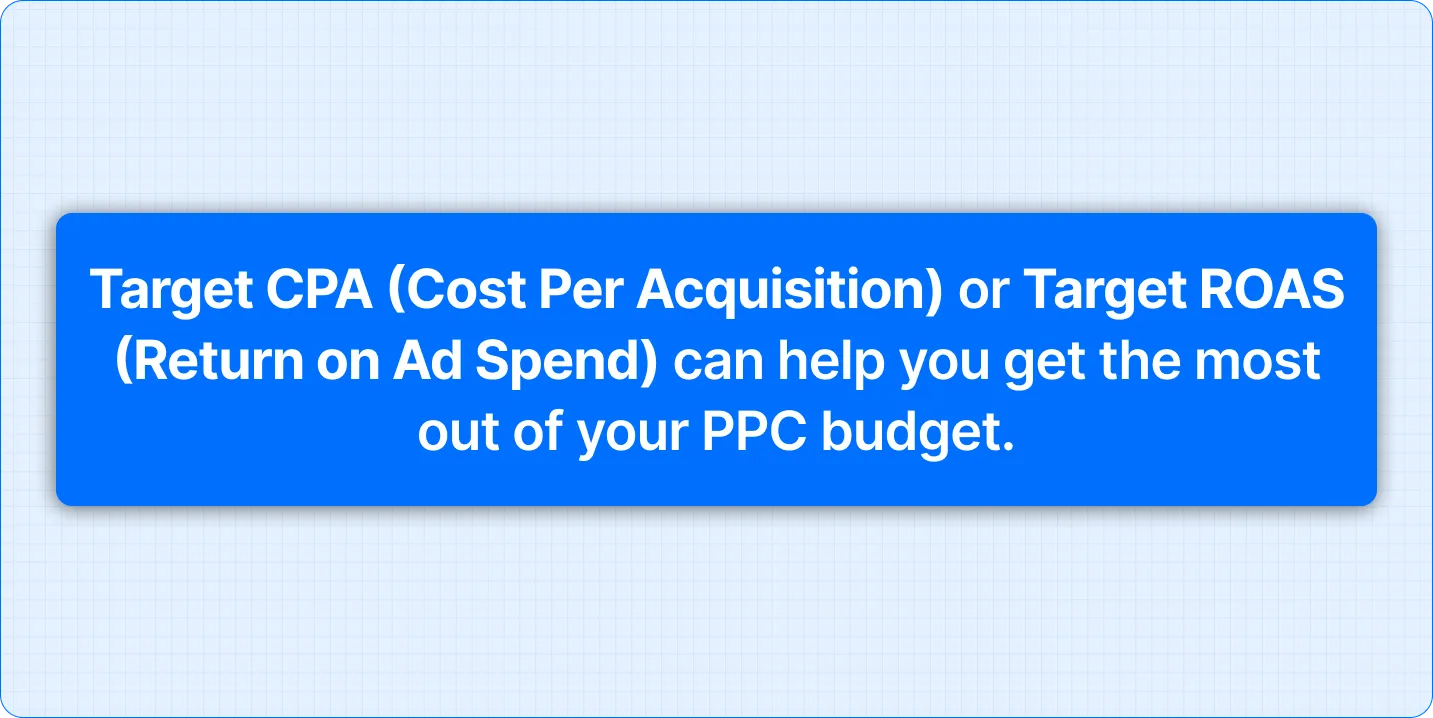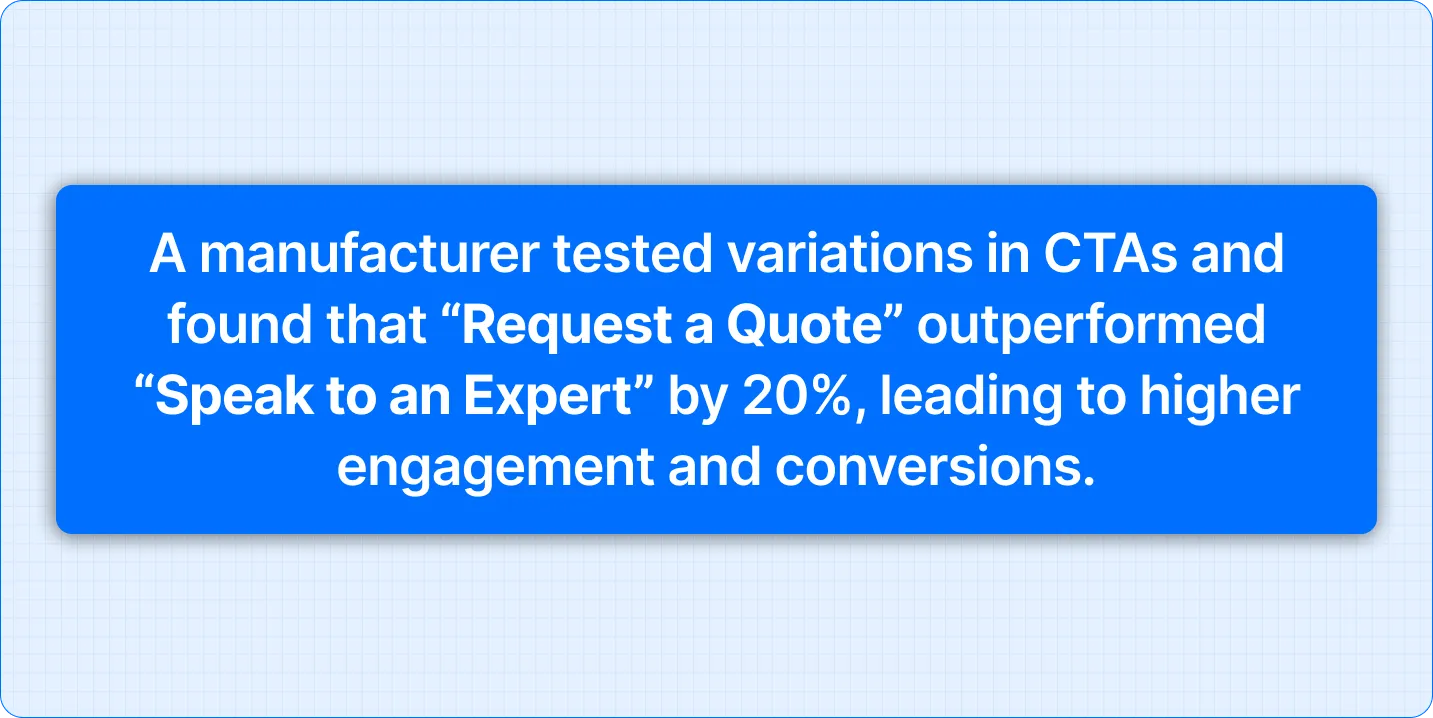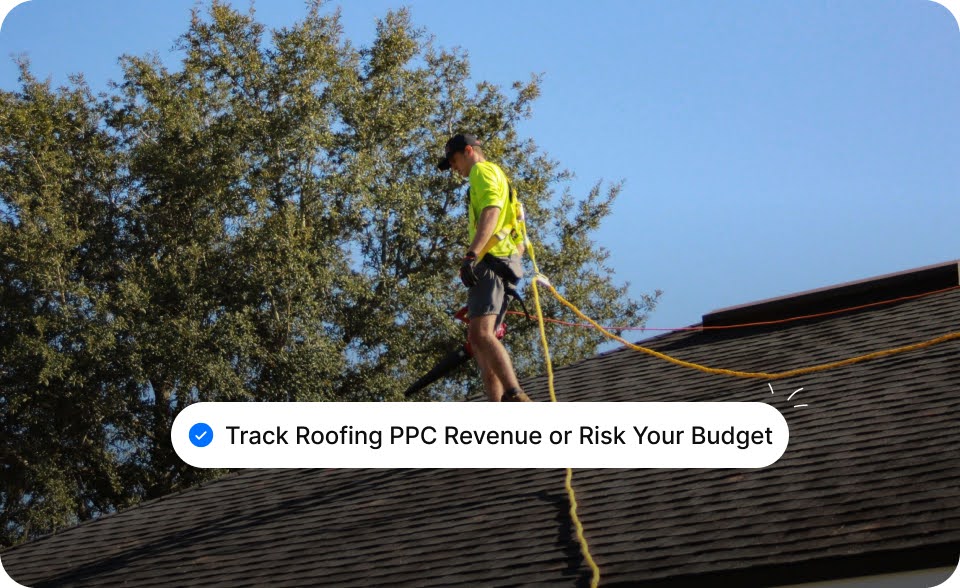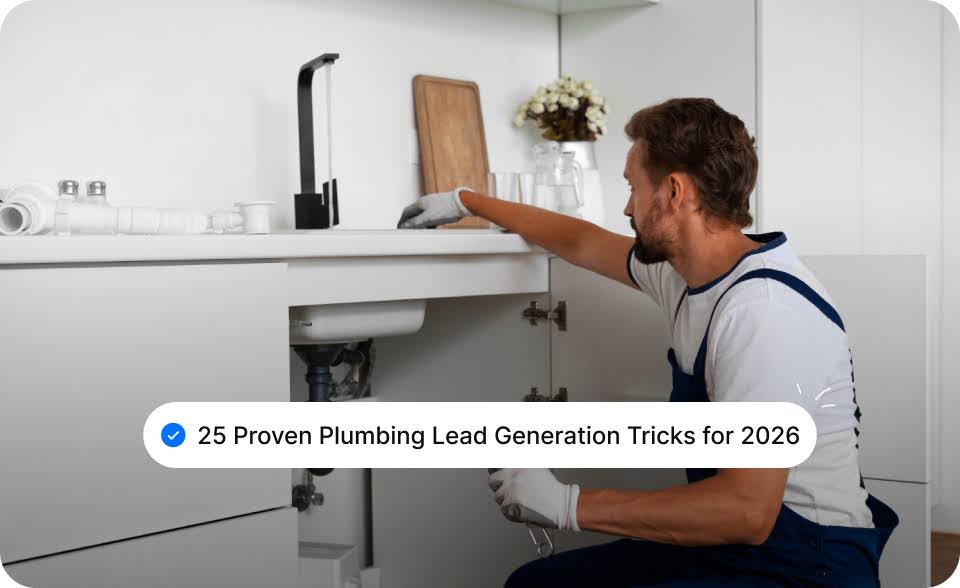You build incredible products. Now, let's get the right people to find them.
Pay-Per-Click (PPC) advertising is the fastest, most effective way to put your company in front of the exact people who are ready to buy. We're talking about procurement managers, engineers, and supply chain executives who are actively searching for what you sell.
TL;DR:
- PPC drives immediate visibility and quality leads, with US paid search spending reaching $124.59 billion in 2024.
- Use Google Ads and Microsoft Advertising to target specific keywords and industries for cost-effective lead generation.
- Integrate PPC with SEO, email marketing, and social media for a well-rounded, sustainable marketing strategy.
- Optimize and automate campaigns with platforms like Gushwork to maximize ROI and ensure precise audience targeting.
What Is PPC? A Simple Guide for Manufacturers
Pay-Per-Click, or PPC, is an online advertising model where manufacturers pay a fee each time their ad is clicked. Rather than paying for impressions, manufacturers only pay for actual engagement. This makes it a cost-effective way to drive traffic to their website and generate leads.
Key Platforms Used in PPC:
The most common PPC platforms for manufacturers are Google Ads and Microsoft Advertising.
- Google Ads is the largest and most popular platform, allowing manufacturers to target specific keywords, industries, and locations.
- Microsoft Advertising (formerly Bing Ads) offers similar features with a slightly different audience base, which can be valuable for targeting niche markets.
Impact on Visibility:
PPC has a direct impact on visibility by placing your ads at the top of search results. In industries like manufacturing, where competition is fierce, PPC ensures that your business is seen by potential customers exactly when they are searching for products or services you offer. This targeted approach helps improve lead generation, sales conversions, and overall brand awareness in a highly competitive market.
Benefits of PPC for Manufacturers: Why You Can't Afford to Ignore It
Unlike other marketing efforts, PPC (Pay-Per-Click) delivers immediate, measurable results, making it an essential tool for modern manufacturers. Here's why:
- Instant Visibility: With PPC, you can appear at the top of search results right away for targeted keywords like "manufacturing solutions" or "custom manufacturing services." This eliminates the long wait for organic rankings and puts your business in front of prospects in real-time.
- Reach High-Intent Buyers: Capture buyers who are actively searching for your products or services. Bid on highly specific keywords such as "industrial CNC machines for sale" or "ISO-certified custom metal fabrication" to reach prospects already deep in the sales funnel and ready to convert.
- Rapid Results: Need to fill your sales pipeline quickly or launch a new product? A well-crafted PPC campaign can place you at the top of search results within hours, not months, helping you gain immediate traction.
- Unmatched Targeting and Control: Platforms like Google Ads and LinkedIn Ads allow for precise targeting, reaching key decision-makers such as engineers, procurement officers, and industry specialists. You can filter your audience by job title, company size, location, and more to ensure your ads reach the people who matter most.
- Measurable ROI: Every PPC campaign offers complete transparency. You can track clicks, leads, and conversions, seeing exactly how much your ad spend is generating in real-time. This data allows you to continuously optimize your strategy, lower your cost per lead, and improve results over time.
- Shortened Sales Cycle: Since PPC targets potential clients who are actively searching for solutions, you can bypass lengthy lead-nurturing processes and focus more on closing deals. This means faster conversions and an accelerated sales cycle.
Also Read: Can Industrial Manufacturers Double Sales in 3 Months?
Top 5 PPC Strategies That Will Put Your Manufacturing Business on the Map
Navigating digital advertising can seem overwhelming, but with the right PPC strategies, your manufacturing business can stand out and attract high-quality leads. Here’s how to make the most of your PPC campaigns:
1. Run a Laser-Focused Keyword Research to Drive Quality Leads
Rather than trying to compete for broad terms, focus on highly specific keywords that match what your clients are actively searching for. For example,

This targeted approach increases your chances of conversion and ensures you're not wasting money on irrelevant clicks.
2. Create Compelling, Technical Ad Copy That Speaks to Their Pain Points
Your ad copy needs to grab attention and speak directly to the needs of manufacturers. Focus on the benefits,

When your ad addresses their pain points, you’re more likely to get a click and convert that interest into a lead.
For example, a precision machining company used PPC targeting “CNC milling for aerospace” and saw a 30% increase in qualified leads.
3. Ensure Landing Pages Are Highly Relevant and Optimized for Conversions
The landing page must match the promise in your ad. If your ad promises “custom CNC machining solutions," the landing page should immediately showcase that service with relevant details and a clear call-to-action. This seamless experience ensures higher conversion rates, turning visitors into potential clients.
4. Maximize Your Budget with Smart Bid Management
Smart bidding strategies like,

These automated systems adjust your bids in real-time, allowing you to stay competitive without overspending.
5. Refine Your Campaign with A/B Testing
Regular testing is key to continuous improvement. A/B testing different versions of your ads and landing pages, like changing the headline or call-to-action, can help you understand what resonates best with your audience. Even small changes can significantly boost your results over time.
For example,

By adopting these strategies, your manufacturing business can achieve real, measurable results with PPC advertising. It’s all about targeting the right audience, refining your message, and optimizing based on real-time data.
Reach the Right Buyers with Targeted PPC Strategies

In the competitive manufacturing industry, targeting the right decision-makers is key. PPC allows precise targeting to connect with key individuals actively seeking your services. Here’s how to leverage it:
- Demographic Targeting: Use platforms like Google Ads and LinkedIn to target decision-makers, such as engineers and procurement officers, based on job titles, industry, company size, and location.
- Geographic Targeting: Focus ads on specific regions or even a radius around your facility, ideal for manufacturers serving regional markets, reducing wasted ad spend.
- Device Targeting: Adjust bids based on device use, engineers on desktops, procurement officers on mobile, ensuring ads appear when and where they're most effective.
By using these targeted strategies, manufacturers can reach the right audience, increasing engagement and driving better ROI.
Boost Your Marketing: Integrate PPC with SEO, Email & Social Media
To maximize your reach and impact, combine Pay-Per-Click (PPC) with SEO, email marketing, and social media.
SEO & PPC: A Winning Combination
By pairing SEO with PPC, you get both immediate visibility and long-term organic growth. Together, they enhance your chances of ranking higher on search engine results pages (SERPs) and increase click-through rates.
Boost Email Campaigns with PPC
Use PPC to drive traffic to your email sign-up forms and grow your subscriber list quickly. Retargeting visitors who interacted with your emails but haven’t converted can also increase engagement and conversions.
Reach Decision-Makers on Social Media
Target decision-makers like engineers and procurement officers on platforms like LinkedIn and Facebook. Running PPC ads on these platforms helps you connect with the right audience and generate qualified leads.
Integrating these strategies creates a seamless marketing approach that boosts visibility, builds trust, and drives conversions.
Also Read: Effective Digital Marketing Strategies for Pulp and Paper Manufacturing
Overcoming PPC Challenges: What Every Manufacturer Needs to Know
PPC advertising can be a game-changer for manufacturers, but it comes with its own set of challenges. Here’s how you can tackle them head-on:
1. Handling High Competition
The manufacturing sector is competitive, and it’s tough to stand out. To compete with industry giants, focus on advanced bidding and precise targeting strategies. Use long-tail keywords and focus on niche markets where larger competitors might not have a strong presence. This approach will help your ads reach the right audience while minimizing the cost of competition.
2. Working With Budget Constraints
If you're working with a limited budget, start small and test different ad variations, keywords, and targeting strategies. Focus on the campaigns that show the best ROI and scale them. This way, you can make the most of your budget without overspending.
3. Fighting Ad Fatigue
Running the same ads for too long can lead to ad fatigue, where your audience stops engaging. Combat this by refreshing your ad copy and creatives regularly. Rotate ads to keep them fresh and aligned with your current campaigns, and always ensure that your messaging remains relevant to your audience's needs.
By addressing these challenges with the right strategies, manufacturers can make the most out of their PPC campaigns and drive quality leads without blowing their budget.
How to Get Started with PPC for Your Manufacturing Business
Getting started with PPC advertising doesn’t have to be overwhelming. Follow these steps to launch effective campaigns that drive results for your manufacturing business:
Step 1. Define Your Objectives
Before you dive into PPC, clearly define your goals. Are you focused on lead generation, brand awareness, or sales conversions? Identifying your primary objectives will help you create a focused strategy and measure your success.
Step 2. Select Platforms and Tools
Choose the PPC platform that fits your industry and budget. For search visibility, Google Ads is a great option, especially for targeting specific product categories. If you're focusing on B2B or targeting decision-makers, consider LinkedIn Ads for more tailored outreach.
Step 3. Structure Your Campaigns
To better target your audience, structure your campaigns based on your product lines or services. Group your ads around specific offerings (e.g., CNC machining, assembly services) to ensure your messaging resonates with the right audience and is relevant to their needs.
Step 4. Monitor and Optimize
Once your campaigns are live, don’t just set and forget. Regularly track their performance using real-time data. Look at metrics like click-through rates (CTR) and conversion rates, and refine your approach based on what’s working and what needs improvement.
By following these simple steps, you can effectively launch and manage PPC campaigns that drive qualified leads, improve visibility, and ultimately grow your manufacturing business.
Finally, is PPC All That You Need?
As a manufacturer, you already know the power of PPC in driving visibility and generating leads. But it’s just one part of the bigger picture. To thrive long-term, your strategy must go beyond PPC.
By integrating SEO, email marketing, content creation, and social media, you build a comprehensive approach that consistently generates leads and nurtures relationships.
PPC plays a vital role in boosting lead generation and conversions, while our team at Gushwork helps automate and optimize your campaigns to ensure they reach the right audience.
Ready to grow your business? Discover how combining PPC with our team's expertise can deliver immediate results and drive sustainable growth for your manufacturing business.
Your PPC Questions Answered: Key Insights for Manufacturers
Q1. How can I measure the effectiveness of my PPC campaigns?
A1. To measure PPC effectiveness, track key metrics such as click-through rate (CTR), conversion rate, and cost-per-lead (CPL). Regularly analyzing these will help you optimize campaigns and improve ROI.
Q2. What are some common PPC mistakes manufacturers should avoid?
A2. Common mistakes include targeting overly broad keywords, neglecting mobile optimization, and failing to track conversions. Avoid these by focusing on specific, industry-relevant keywords and continuously optimizing your campaigns.
Q3. How do I choose the right PPC platform for my manufacturing business?
A3. For B2B manufacturers, Google Ads is ideal for targeting high-intent search queries, while LinkedIn Ads offers excellent targeting for decision-makers. Select a platform based on your target audience and budget.
Q4. Can PPC work alongside my existing marketing efforts?
A4. Yes! PPC can complement SEO, email marketing, and social media campaigns, driving immediate results while enhancing your long-term strategy.
Q5. How can automation platforms like Gushwork improve my PPC campaigns?
A5. Platforms like Gushwork can automate PPC workflows, optimize bidding strategies, and provide real-time insights, ensuring that you reach the right audience and achieve the best possible results.
Q6. What’s the best way to scale my PPC campaigns?
A6. Start small, test different ads, keywords, and targeting options. Once you identify the strategies that deliver results, gradually scale your campaigns while monitoring performance to ensure optimal ROI.




















.webp)








.webp)
.svg)


.svg)
.svg)
.svg)







.svg)